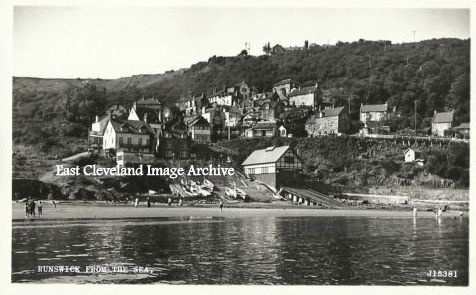
A view of Runswick including the former lifeboat house (now the Inshore Rescue boathouse).
Image courtesy of a supporter of the Archive.
|
|
||
 A view of Runswick including the former lifeboat house (now the Inshore Rescue boathouse). Image courtesy of a supporter of the Archive. 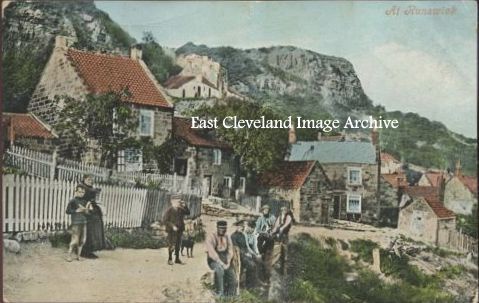 A hand tinted postcard of locals taking the sun in Runswick. The un-metalled road gives an impression that this dates from the early 20th century. Image courtesy of a supporter of the Archive. 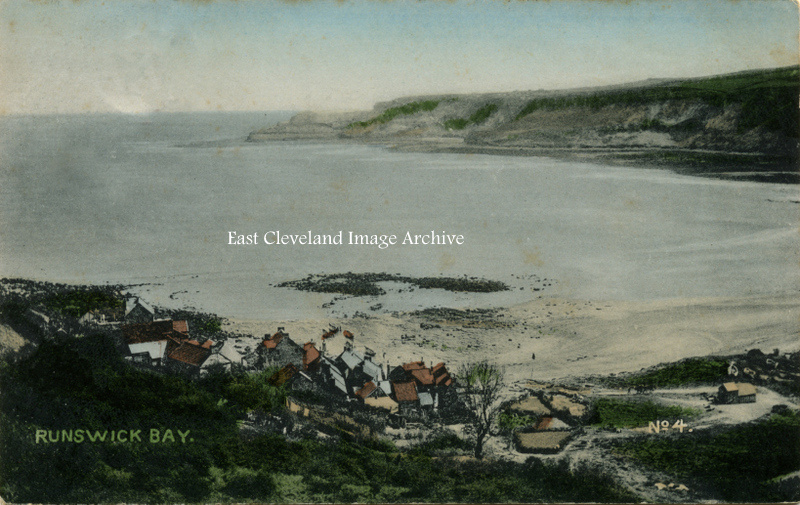 A hand tinted postcard view of Runswick Bay, complete with the walled drying greens for the fishermen’s nets. The former alum workings of Kettleness can ve seen at the centre of this image. Image courtesy of Ann Wedgewood and Keith Bowers. 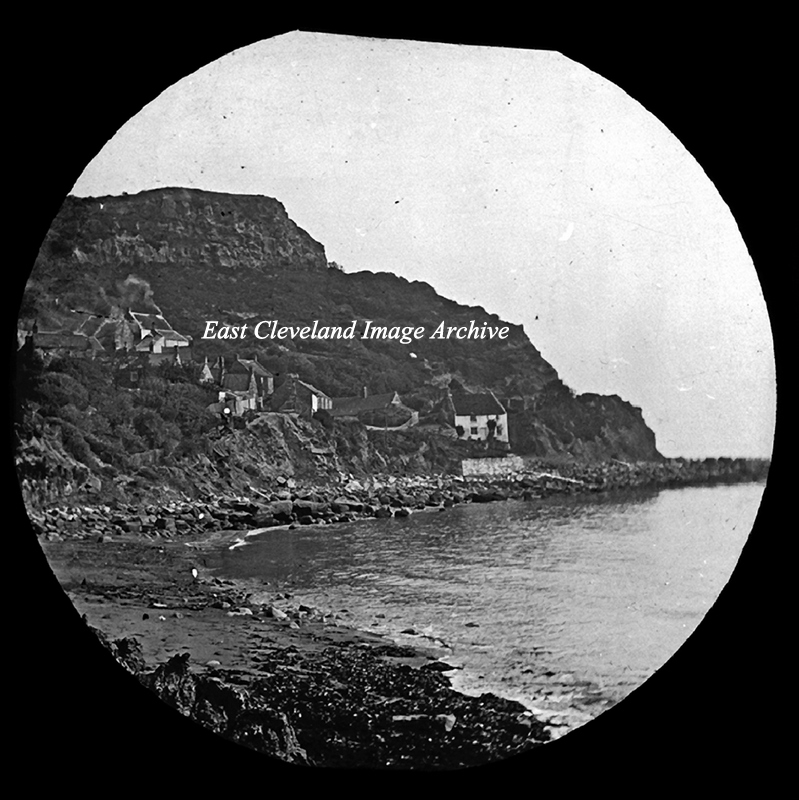 This almost lyrical view of Runswick Bay which includes the cottage perching on the northen end of the seawall, but unlike today (with a thatched roof) the cottage appears to have a pantile roof. Can anybody assist in dating the image? Wendy Haxton tells us: ”I have a hand-coloured postcard showing this cottage, which was printed in 1936 and entitled, Lady Palmer’s Cottage, Runswick Bay. On this card, the cottage to the left of the white-walled one, has a pantile roof.” Image courtesy of Geoff Patton and thanks to Wendy Haxton for that update. 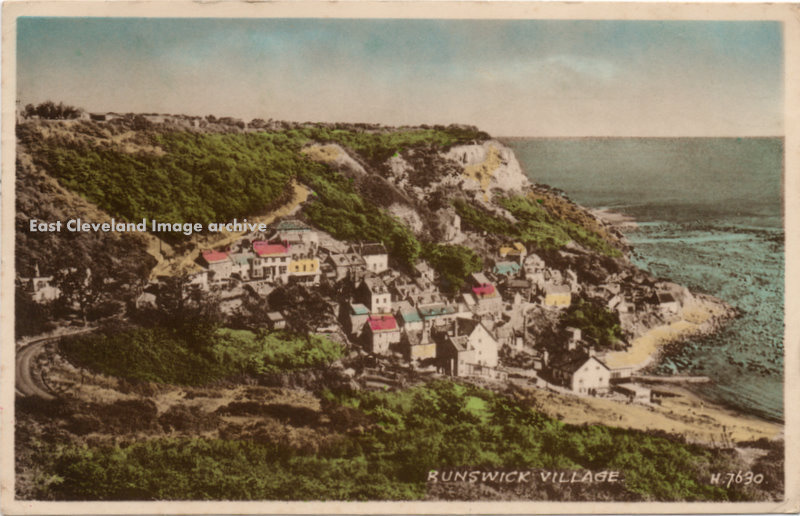 A delightful postcard view of Runswick Bay, complete with the ‘old’ road which led to the village. More recently the more direct route down was developed owing to land slipage. Image courtesy of Ken Johnson. 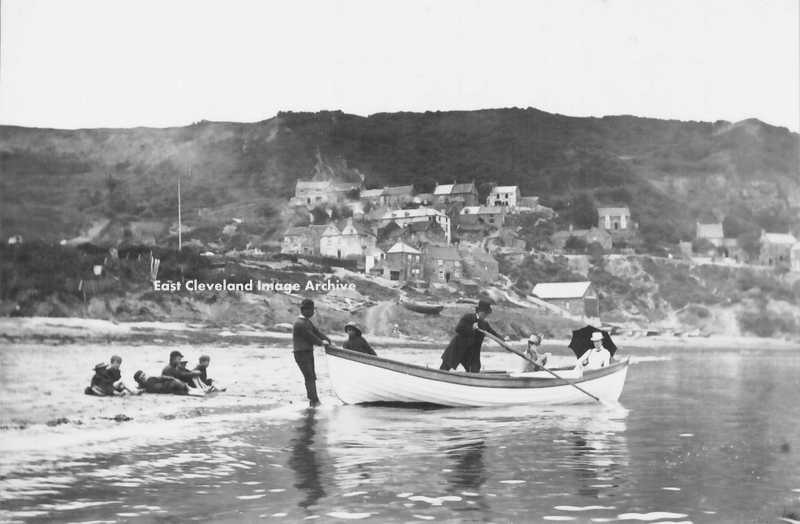 Two elegantly dressed young Edwardian ladies awaiting their overdressed gentleman Image courtesy of Maurice Grayson. 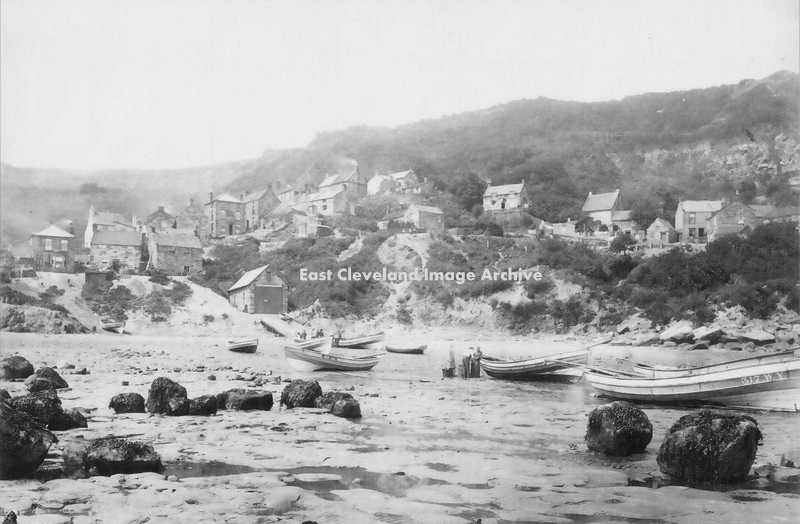 Yorkshire cobles drawn up on the beach at Runswick Bay. The design of high bow for launching off open beaches into sometimes heavy seas and square stern for beaching, was well suited for the North Sea beaches. Clinker planking reflected their Viking ancestry, normally sailed with one dipping lugsail and foresail, larger cobles sometimes added a mizzen sail. 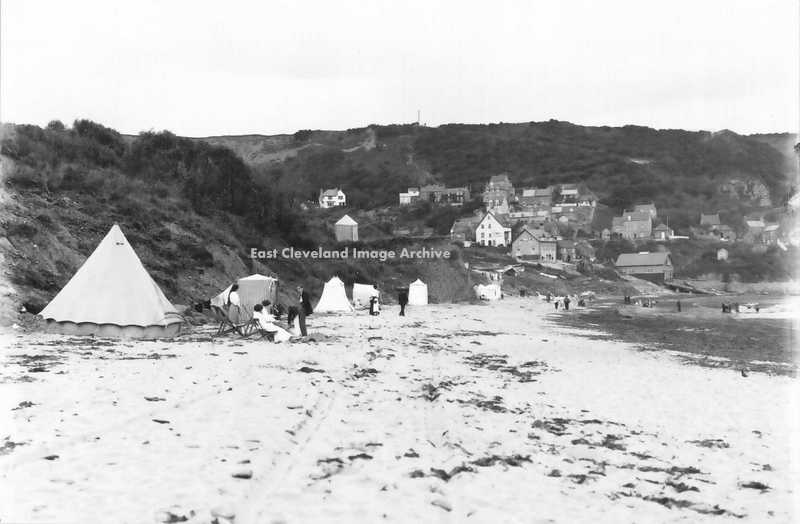 Runswick Bay Beach, in Edwardian times. With a variety of tents for ladies to change their beach wear in modesty. The larger seaside resorts had wheeled bathing huts which entered the sea, probably the difficulties of accessing the beach at Runswick led to this innovative method of ensuring the ladies privacy. Image courtesy of Maurice Grayson. 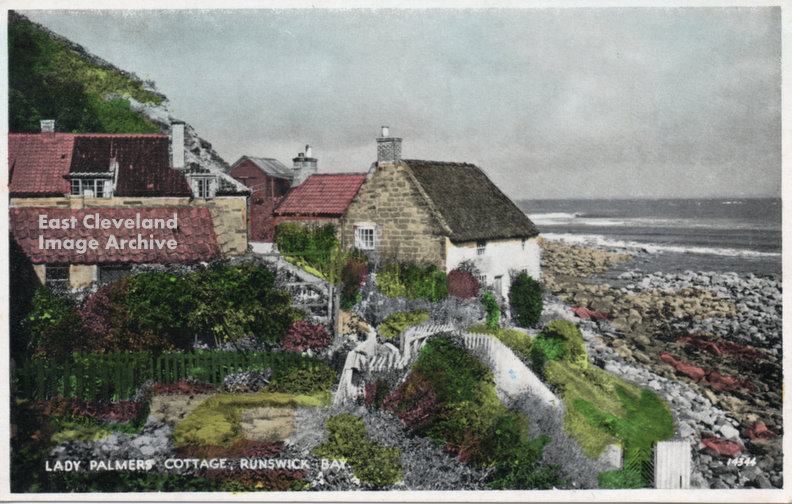 So called as it used to be part of the Grinkle Park estate and originally owned by Sir Mark Palmer, today it is part of the Mulgrave Estate. Also traditionally called the ”Thatched Cottage” it is perched on the western end of the lower sea wall at Runswick Bay. The cottage was later used as an holiday home by Vet Alf Wight, better known as ”James Herriot”. Image from a postcard courtesy of Ken Johnson 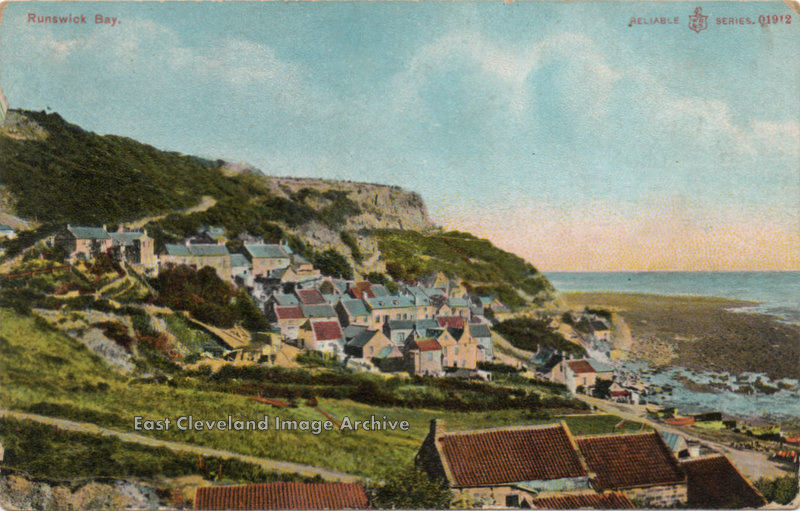 A Reliable series postcard of Runswick Bay around 1900. The old road down to the village and beach can be seen above the cottages. At this date they would belong to fishermen and their families; unlike today when in winter months the ‘holiday cottage’ residents are absent. Image courtesy of Ken Johnson. |
||
Recent Comments